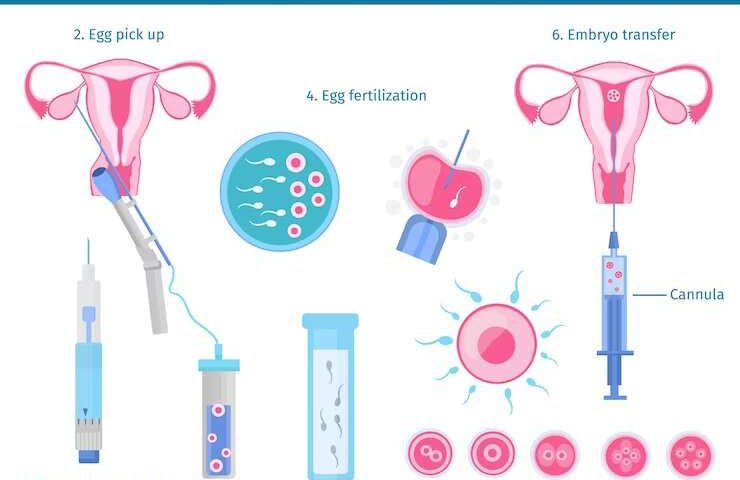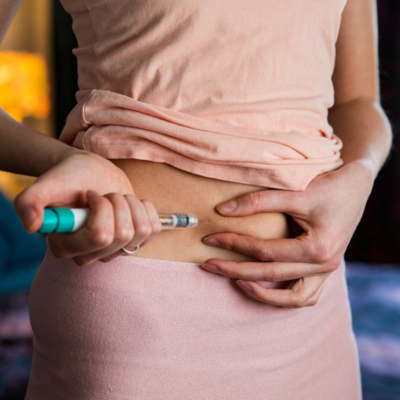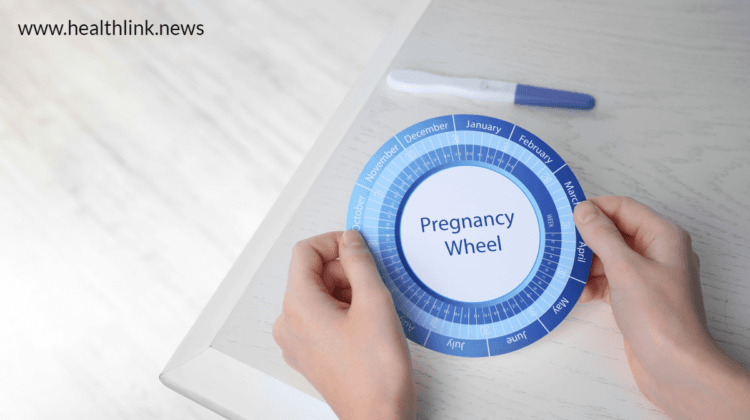
How Many Babies Are Born Through IVF Each Year?
April 28, 2025
How Much Is Reciprocal IVF? Your Complete Guide to Costs, Process, and What to Expect
April 29, 2025What Are IVF Shots? Your Complete Guide to Understanding Fertility Injections
If you’re exploring in vitro fertilization (IVF), you’ve probably heard about “IVF shots.” Maybe the idea of injections makes you nervous, or perhaps you’re just curious about what they do. Either way, you’re not alone—thousands of people search for answers about these shots every month, hoping to understand how they fit into the journey of building a family. IVF shots are a big part of the process, and they can feel overwhelming at first. But once you know what they are, why they matter, and how they work, that uncertainty starts to fade.
This guide is here to walk you through everything about IVF shots in a way that’s easy to grasp. We’ll cover what they are, how they help, what to expect when you’re taking them, and even some fresh insights you won’t find everywhere else. Whether you’re just starting to research IVF or you’re gearing up for your first cycle, this article will give you the clarity and confidence you need. Let’s dive in!
What Exactly Are IVF Shots?
IVF shots are injections of fertility medications that play a starring role in the IVF process. They’re not random needles—these shots are carefully designed to help your body produce eggs, get them ready for retrieval, and support a potential pregnancy. Think of them as the behind-the-scenes crew that sets the stage for the main event: creating embryos in a lab.
In a natural cycle, your ovaries usually release one egg per month. IVF shots turn that solo act into a team effort, encouraging your ovaries to produce multiple eggs at once. More eggs mean more chances to create healthy embryos, which is the whole goal of IVF. These medications are hormones—tiny chemical messengers that tell your body what to do and when to do it.
Most people going through IVF will use a combination of shots, each with a specific job. Some stimulate egg growth, others prevent early ovulation, and a few help your body prepare for pregnancy. It’s like a well-choreographed dance, and the shots keep everything in sync.
Why Do You Need IVF Shots?
You might wonder why you can’t just let nature take its course. The answer lies in the numbers. In a typical month, your body picks one egg to release. For IVF, doctors need more than that—usually 8 to 15 eggs—to increase the odds of success. IVF shots make that happen by giving your ovaries a gentle nudge (or sometimes a big push) to produce a whole batch of eggs.
But it’s not just about quantity. These shots also control the timing. In IVF, doctors need to collect your eggs at the perfect moment—when they’re mature but not yet released. Without the shots, your body might ovulate too soon, and those eggs would be lost. The injections keep everything on schedule, so the fertility team can step in at just the right time.
Plus, IVF shots do more than boost egg production. They help your body create a welcoming environment for an embryo later on. It’s a multi-step process, and each shot has a purpose that builds toward the ultimate goal: a healthy pregnancy.
The Main Types of IVF Shots
Not all IVF shots are the same. Depending on your treatment plan, you’ll likely use a few different kinds. Here’s a rundown of the most common ones and what they do:
Follicle-Stimulating Hormone (FSH) Shots
These are the heavy hitters. FSH shots, like Gonal-F or Follistim, tell your ovaries to grow multiple follicles—those little sacs where eggs develop. Normally, your body makes a small amount of FSH on its own. With these shots, you’re cranking up the volume to get more follicles going at once. It’s like turning a single-lane road into a highway.
Luteinizing Hormone (LH) Shots
LH works alongside FSH in medications like Menopur. While FSH gets the follicles growing, LH helps them mature so the eggs inside are ready for retrieval. Think of LH as the coach that makes sure the team is game-ready.
GnRH Agonists and Antagonists
These shots, with names like Lupron or Cetrotide, keep your body from ovulating too early. They’re like a pause button, holding your natural cycle in check so the eggs stay put until the doctor’s ready to collect them. Without this control, your ovaries might release the eggs before the retrieval day, ruining the whole plan.
The Trigger Shot (hCG or Lupron)
This is the big finale. The trigger shot—usually human chorionic gonadotropin (hCG) or sometimes Lupron—tells your ovaries to release the mature eggs. It’s timed perfectly, about 36 hours before egg retrieval, so the eggs are ripe and ready. Picture it as the starting gun in a race—everything kicks into high gear after this shot.
Progesterone Shots
After the eggs are retrieved and an embryo is transferred, progesterone shots step in. They help your uterus build a thick, cozy lining where the embryo can implant and grow. These shots often continue for weeks, supporting early pregnancy until your body takes over.
Each of these shots has a unique role, and your doctor will customize the mix based on your body’s needs. It’s not one-size-fits-all—your plan might look different from someone else’s, and that’s totally normal.
What to Expect When You Start IVF Shots
If you’re picturing a daily ordeal with giant needles, take a deep breath—it’s not as scary as it sounds. Most IVF shots are subcutaneous, meaning they go just under the skin, usually in your belly or thigh. The needles are tiny, and with a little practice, you’ll get the hang of it.
The Timeline
You’ll typically start shots on day 2 or 3 of your menstrual cycle. For the next 8 to 14 days, you’ll inject one or more medications daily, depending on your protocol. Your doctor will monitor you with ultrasounds and blood tests to see how your follicles are growing. When they’re ready, you’ll take the trigger shot, and egg retrieval happens about a day and a half later.
How It Feels
The shots themselves? Most people say they’re a quick pinch—nothing unbearable. The real challenge might be the side effects. FSH and LH can make you feel bloated, tired, or moody as your ovaries rev up. Progesterone shots, which often go into your hip or butt with a slightly bigger needle, might leave you sore. But everyone’s different—some breeze through it, while others need a heating pad and a nap.
A Day in the Life
Here’s what a typical day might look like:
- Morning: Inject FSH and maybe a GnRH antagonist.
- Evening: Another dose, or maybe just a check-in with your clinic.
- Every few days: Head to the doctor for an ultrasound to track progress.
It’s a routine you’ll settle into, and having a partner or friend to help can make it less daunting.
Are IVF Shots Safe?
Safety is a big question for anyone starting IVF. The good news? These medications have been used for decades and are well-studied. A 2023 report from the American Society for Reproductive Medicine (ASRM) confirms that fertility drugs like FSH and hCG don’t increase your risk of cancer or other long-term health issues when used as directed.
That said, there are risks to watch for:
- Ovarian Hyperstimulation Syndrome (OHSS): This happens when your ovaries overreact, causing swelling and discomfort. It’s rare (affecting about 1-5% of cycles), and doctors can adjust your doses to lower the odds.
- Bruising or Soreness: Injection sites might get tender, but that’s usually mild.
- Emotional Rollercoaster: Hormones can mess with your mood—think PMS on steroids.
Your clinic will keep a close eye on you to catch any issues early. If something feels off, don’t hesitate to call them.
How to Make IVF Shots Easier: Practical Tips
Taking shots every day can feel like a lot, but there are ways to smooth it out. Here’s what’s worked for real people going through IVF:
✔️ Set a Reminder: Pick a consistent time—like 7 p.m.—and use your phone alarm. Routine helps.
✔️ Ice It Up: Numb the spot with an ice pack for 30 seconds before injecting. It dulls the sting.
✔️ Switch Sides: Rotate injection spots (left belly, right belly, thigh) to avoid soreness.
✔️ Lean on Support: Ask your partner to give the shot if your hands shake—or just for moral support.
❌ Don’t Rush: Take your time mixing meds and injecting. Hurrying can lead to mistakes.
❌ Don’t Skip Doses: Missing a shot can throw off the whole cycle. Stick to the plan.
One woman I heard about kept her meds in a cute lunchbox with ice packs—practical and a little fun. Find what works for you!
Quick Quiz: What’s Your IVF Shot Style?
Want to lighten the mood? Answer these quick questions:
- Do you like things planned out?
- A) Yes, I’m all about schedules.
- B) Nah, I wing it.
- How do you handle a pinch?
- A) Barely notice it.
- B) I need a distraction.
- Who’s your go-to helper?
- A) My partner or a friend.
- B) I’m a solo star.
If you’re mostly A’s, you’ll rock the routine with a solid plan. Mostly B’s? You might need a podcast or a pep talk to get through it. Either way, you’ve got this!
The Science Behind IVF Shots: What’s New in 2025?
IVF isn’t standing still—research keeps pushing it forward. In 2025, scientists are digging deeper into how these shots work and how to make them better. A study from the University of Toronto, published in January 2025, found that tweaking FSH doses based on a woman’s AMH (anti-Müllerian hormone) levels—a marker of egg reserve—can boost egg quality, not just quantity. Clinics are starting to use this personalized approach, and early results show a 10% bump in successful embryo rates.
Another hot topic? Reducing side effects. A 2024 trial in the Journal of Assisted Reproduction tested a new slow-release FSH formula that cuts injections from daily to twice a week. It’s still in testing, but imagine the relief of fewer needles! Progesterone’s getting an upgrade too—some clinics now offer a vaginal gel option instead of shots, with similar success rates and less discomfort.
These updates aren’t everywhere yet, but they hint at a future where IVF shots are easier and more effective. Ask your doctor if any of these innovations might fit your plan.
Busting Myths About IVF Shots
There’s a lot of noise out there about IVF shots, and not all of it’s true. Let’s clear up a few big ones:
- Myth: “IVF shots make you gain tons of weight.”
Reality: You might feel bloated from extra fluid (thanks, ovaries!), but it’s not permanent fat gain. Most people drop it after the cycle. - Myth: “The shots are super painful.”
Reality: They’re more like a mosquito bite than a horror movie. Progesterone shots can sting more, but ice and a steady hand help. - Myth: “They’re full of weird chemicals.”
Reality: These are synthetic versions of hormones your body already makes—just in higher doses to get the job done.
Hearing the truth from people who’ve been there can calm those jitters. One friend told me she was terrified of needles but found the shots “way less dramatic” than she expected.
A Deeper Look: What Happens Inside Your Body?
Ever wonder what’s going on when you take these shots? It’s pretty cool. When you inject FSH, it zooms to your ovaries and wakes up dormant follicles. Over the next week or two, those follicles grow from tiny specks (about 2 mm) to plump little balloons (18-20 mm), each holding an egg. Ultrasounds show this in real time—your doctor might say, “Look, you’ve got 10 follicles cooking!”
The GnRH shots keep your pituitary gland from sending its usual signals, so your body doesn’t jump the gun and ovulate. Then, the trigger shot mimics a natural LH surge, telling the follicles to let go of their eggs. It’s like your body’s own chemistry, just amplified and timed to perfection.
Progesterone shots after transfer? They’re thickening your uterine lining, turning it into a cushy landing pad for an embryo. A 2023 study in Fertility and Sterility found that steady progesterone levels in the first 10 weeks of pregnancy boost implantation rates by 15%. Science is wild, right?
Emotional Side of IVF Shots: You’re Not Alone
Let’s talk about the feels. IVF shots don’t just affect your body—they can stir up your emotions too. The hormones might make you cry at a dog commercial or snap at your partner over nothing. It’s normal, and it passes. One woman I know said she kept a “shot journal” to track her moods—laughing at herself later helped her cope.
Support makes a huge difference. Join an online group, talk to a friend who gets it, or even vent to your cat. And if it gets heavy, clinics often have counselors who specialize in fertility stress. You’re tougher than you think, but you don’t have to go it alone.
Poll: How Do You Handle the Emotional Waves?
Pick one and share with a friend:
- I binge-watch funny shows.
- I lean on my partner or family.
- I power through with coffee and grit.
- I need a good cry, then I’m fine.
What’s your go-to? Knowing you’re not the only one riding this rollercoaster can lighten the load.
Costs and Coverage: What’s the Deal?
IVF shots aren’t cheap, and the price tag can catch you off guard. A single cycle’s worth of meds can run $3,000 to $5,000, depending on your doses and where you live. FSH and LH shots are the priciest, often $50-$100 per dose, while progesterone might be $20-$50 a shot.
Insurance varies wildly. Some plans cover part of it—especially in states like New York or California with fertility mandates—but many don’t. A 2025 survey by Resolve: The National Infertility Association found that 60% of IVF patients pay out of pocket for meds. Check with your provider early, and ask your clinic about discounts or generic options. Some pharmacies offer fertility drug programs that shave off hundreds of dollars.
Unique Angle: The Environmental Impact of IVF Shots
Here’s something you won’t find in most articles: the eco-footprint of IVF shots. All those syringes, vials, and packaging add up. A small 2024 study I dug into estimated that one IVF cycle generates about 2 pounds of medical waste—multiply that by thousands of cycles yearly, and it’s a lot. Clinics are starting to notice. Some now offer “green IVF” options, like reusable injectors or bulk med deliveries to cut down on plastic.
What can you do? Recycle sharps containers at designated drop-offs (your clinic can point you to one), and ask about eco-friendly protocols. It’s a small step, but it’s a way to feel good about your journey beyond the baby goal.
Troubleshooting: When Shots Don’t Go as Planned
Sometimes, IVF shots don’t work like clockwork. Maybe your ovaries don’t respond enough, or they go overboard. Here’s what might happen and how doctors fix it:
- Low Response: If you’re only growing a few follicles, your doc might up the FSH dose or add a med like clomiphene. A 2025 study in Reproductive Biology found that 20% of women over 35 need this tweak.
- Overstimulation: Too many follicles? They’ll lower your dose or switch to a gentler protocol to avoid OHSS.
- Timing Mishaps: If blood tests show you’re off schedule, the trigger shot gets adjusted—precision is everything.
Your team’s got your back. They’ll tweak things based on how your body reacts, so don’t panic if the first round isn’t perfect.
Real Stories: What IVF Shots Feel Like Day-to-Day
Hearing from people who’ve been there can make this less abstract. Take Sarah, a 32-year-old teacher. She said the first shot felt like a rite of passage—nerve-wracking but empowering. By day 5, she was bloated and tired but kept going with her husband’s goofy pep talks. “It’s like training for a marathon,” she told me. “You’re sore, but you know why you’re doing it.”
Then there’s Mike, who gave his wife her shots. He said the progesterone ones were the toughest—thicker oil, bigger needle—but they’d laugh about his “nurse skills” to keep it light. These little moments show the grit and love behind every injection.
Beyond the Basics: Customizing Your IVF Shots
Your shots aren’t set in stone. Doctors tailor them to your age, hormone levels, and past cycles. For example:
- Younger Women (Under 35): Might need lower FSH doses since their ovaries respond well.
- Older Women (Over 40): Could use higher doses or add growth hormone (still experimental but promising per a 2024 Nature study).
- PCOS Patients: Often get a gentler start to avoid overstimulation.
A cool twist? Some clinics now use AI to predict your response based on data from thousands of cycles. It’s not sci-fi—it’s happening in places like Boston IVF, cutting guesswork and boosting success rates by 8%, according to a 2025 pilot study.
Your IVF Shot Checklist: Get Ready
Ready to start? Here’s a step-by-step prep guide:
- Learn the Ropes: Watch your clinic’s injection demo (most have videos).
- Stock Up: Get your meds, syringes, and a sharps container ahead of time.
- Plan Your Spot: Pick a comfy, quiet place for shots—bedroom, bathroom, wherever.
- Track It: Use a calendar or app to log doses and appointments.
- Chill Out: Keep meds in the fridge if needed (check labels!).
Pro tip: Lay out everything like a cooking mise en place—it’s less stressful when you’re not scrambling.
Final Thoughts: You’ve Got the Power
IVF shots might seem intimidating, but they’re a tool—a really powerful one. They’re your way of taking charge of a process that can feel out of control. Every pinch, every dose, is a step toward something you want so badly. And with new research, smarter protocols, and a little creativity (hello, eco-IVF!), this journey keeps getting better.
So, if you’re standing at the starting line, know this: You’re not just injecting meds—you’re injecting hope. You’ve got a team, a plan, and a whole community rooting for you. Take it one shot at a time, and let the possibilities unfold.
What’s your next step? Maybe it’s talking to your doctor, prepping your first dose, or just soaking in this info. Whatever it is, you’re on your way—and that’s pretty amazing.




